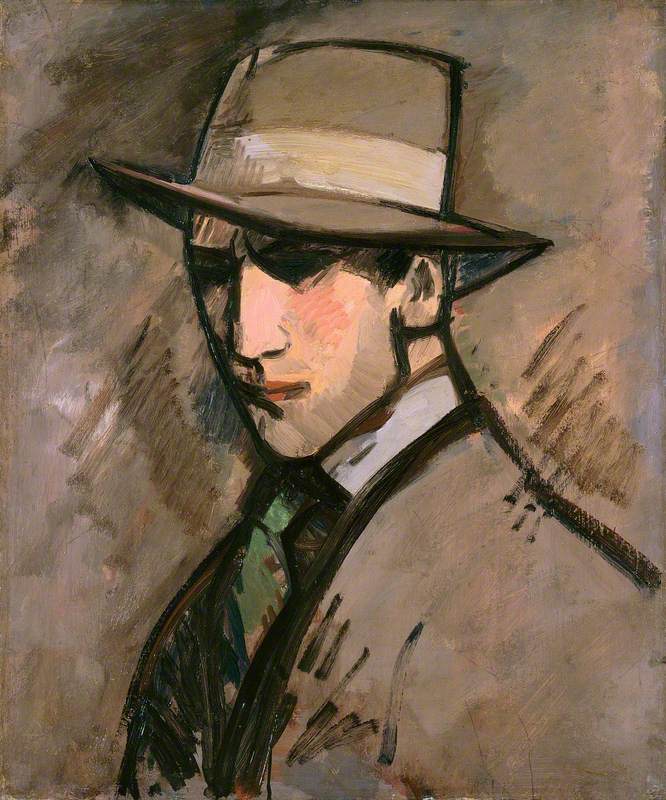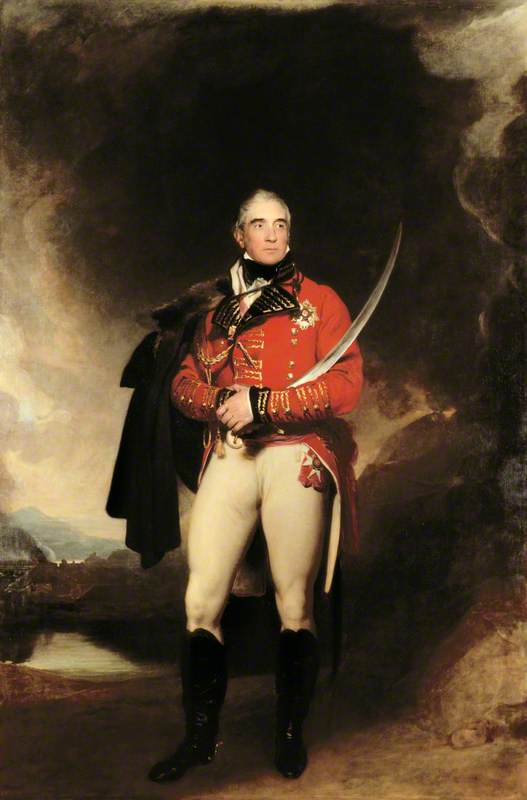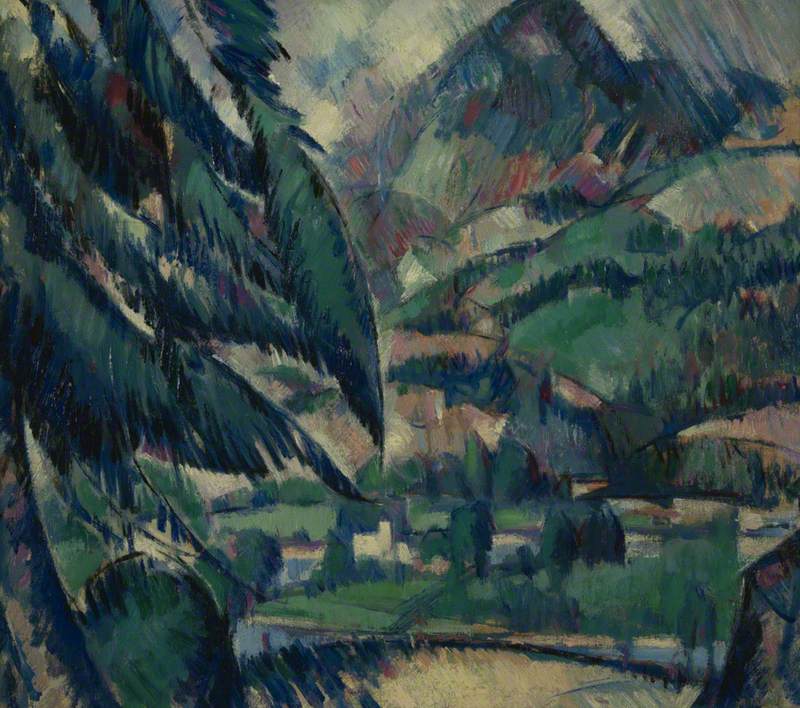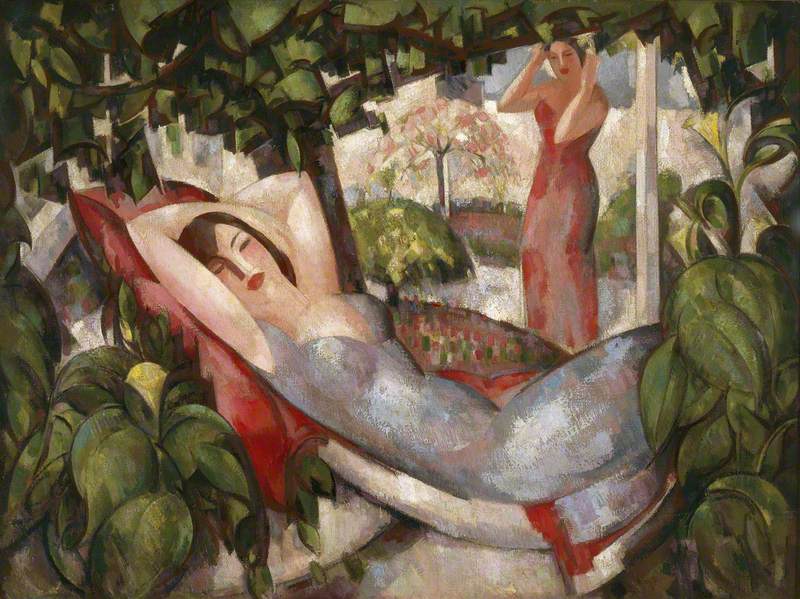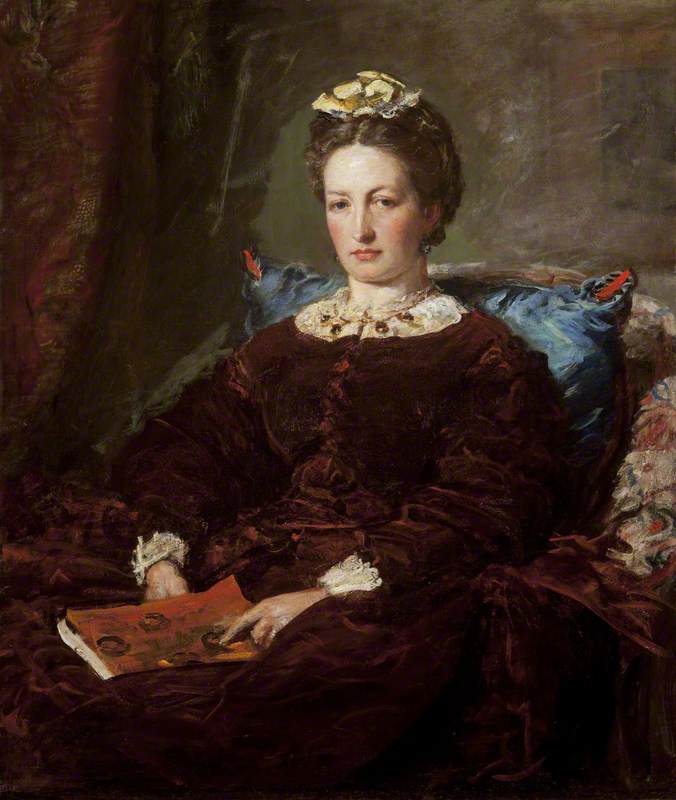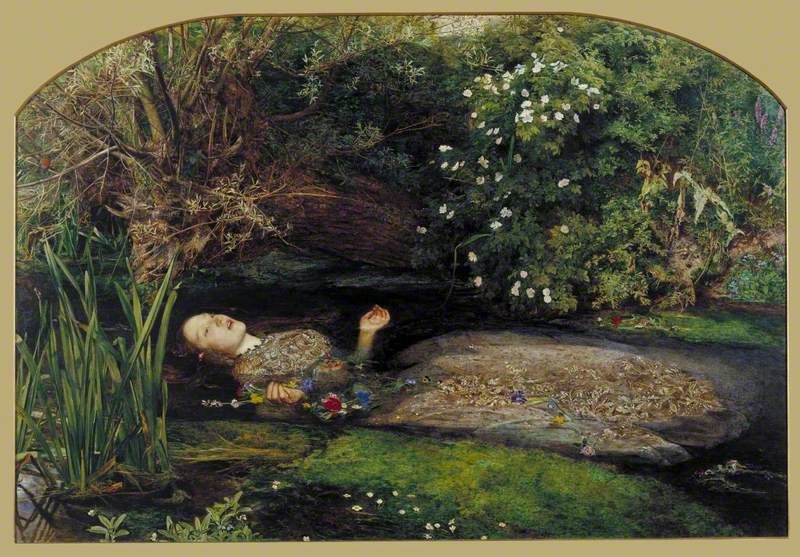Ahead of lockdown in 2020, Culture Perth and Kinross' marketing team had a brilliant idea. What if we could recreate the works of art in our collections using only Microsoft Paint? And thus #DougieDraws was born, paying homage to the collections we look after. We've handpicked some of our favourite works that #DougieDraws has created so far, and placed them alongside the original works, so you can compare masterpieces!
-
Self Portrait: The Grey Hat
Self Portrait: The Grey Hat 1909This work is painted in a deliberately crude, forceful style that echoes the savage mood suggested by Fergusson's furrowed brow and intense, brooding gaze. A rough spontaneous application of paint in dark earth tones and strong black outlines that simplify form, lend the image a powerful primitive feel.
The black eyes, characteristic of many of Fergusson's Fauvist portraits, are another noteworthy feature, probably derived from the work of the Dutch painter Kees van Dongen (1877-1968). He exhibited in the Paris Salons at the time and is now considered one of the most dynamic of the Fauves.
John Duncan Fergusson (1874–1961)
Oil on board
H 61 x W 51 cm
Perth & Kinross Council
-
The original #DougieDraws, the one that kick-started a revolution, led to increased social media engagement and created one actual newspaper article in the local press (no, really).
Our events officer is a dab hand at putting together our podcasts & doing some other techy stuff but also Paint. He recreated this work in MS Paint. Presenting The Grey Hat by #DougieDraws
The Grey Hat by DougieDraws
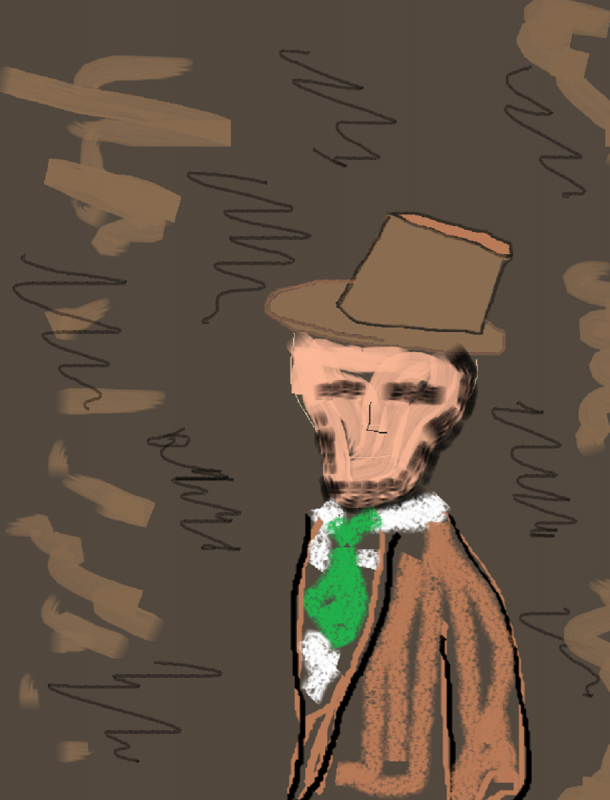 © Culture Perth and Kinross. Image credit: Culture Perth and Kinross
© Culture Perth and Kinross. Image credit: Culture Perth and Kinross
-
Danu, Mother of the Gods
Danu, Mother of the Gods (Margaret Morris, 1891–1980) 1952Fergusson began work on this ambitious late work during the 1940's basing Danu, the Celtic Mother of the Gods, on Morris, wearing a costume she had designed for a performance with her Celtic Ballet. Fergusson used a second model, Martha Arnott, for the final stages of the portrait, as Morris was too busy.
Fergusson and Morris encouraged a revival of Celtic culture on their return to Glasgow in 1939 and Morris founded the Celtic Ballet in 1940 with these interests very much evident. The couple's beliefs reflected a wider artistic and literary trend to encourage and promote a distinctly Scottish cultural tradition.
John Duncan Fergusson (1874–1961)
Oil on canvas
H 184 x W 123 cm
Perth & Kinross Council
-
Fergusson based this painting on Margaret Morris, wearing a costume she had designed. #DougieDraws based his version on the Fergusson original.
Danu, Mother of the Gods by #DougieDraws
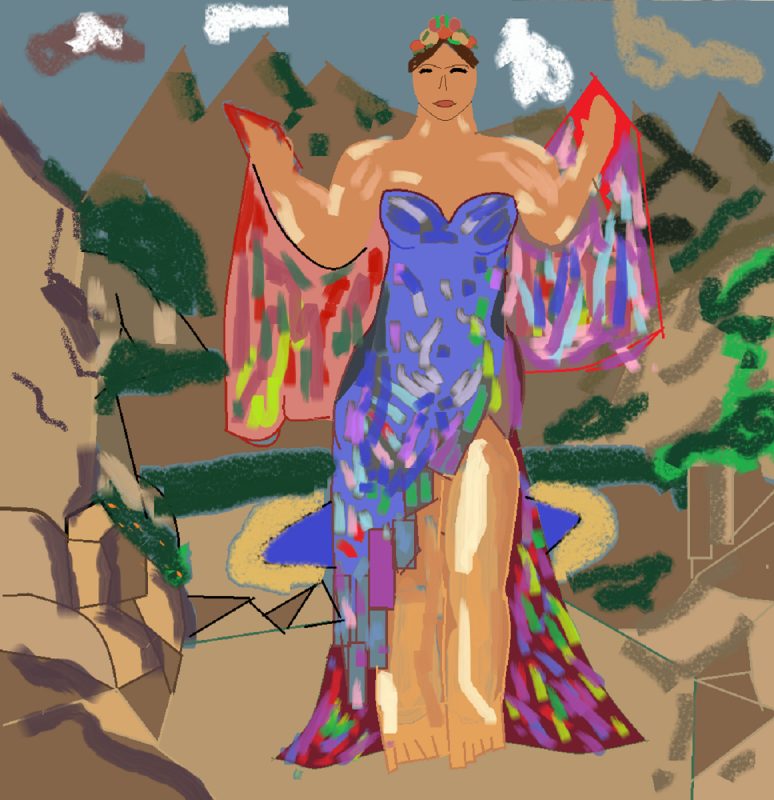 © Culture Perth and Kinross. Image credit: Culture Perth and Kinross
© Culture Perth and Kinross. Image credit: Culture Perth and Kinross
-
Thomas Graham, Lord Lynedoch
Thomas Graham, Lord Lynedoch (1748–1843) c.1815–1818Full-length portrait of Thomas Graham, General Lord Lynedoch in his military uniform, wearing the badge, star and sash of the Order of the Bath alongside the Gold Peninsular Cross before the battlefield of Barossa. In his left arm, he holds the 1814 Shamshir/Mameluke sword presented to him by George IV. Glazed in a foliate gilt frame.
Following the death of his wife, Graham became a soldier, founding the 90th Regiment of Foot in Perth in 1793. In the Peninsular Wars against Napoleon, he became second in command to the Duke of Wellington. Lynedoch stands in his military uniform, wearing the badge, star and ribbon of the Order of the Bath alongside the Gold Peninsular Cross before the ruins of Barossa.
Thomas Lawrence (1769–1830)
Oil on canvas
H 321 x W 266.7 cm
Perth & Kinross Council
-
We quite like this one. Regular visitors to the Perth Museum and Art Gallery will recognise the original work on display in the rotunda. We used this #DougieDraws to promote a podcast we did on Lord Lynedoch. There are two episodes! Just search for Culture Perth and Kinross wherever you listen to podcasts!
Lord Lynedoch by #DougieDraws
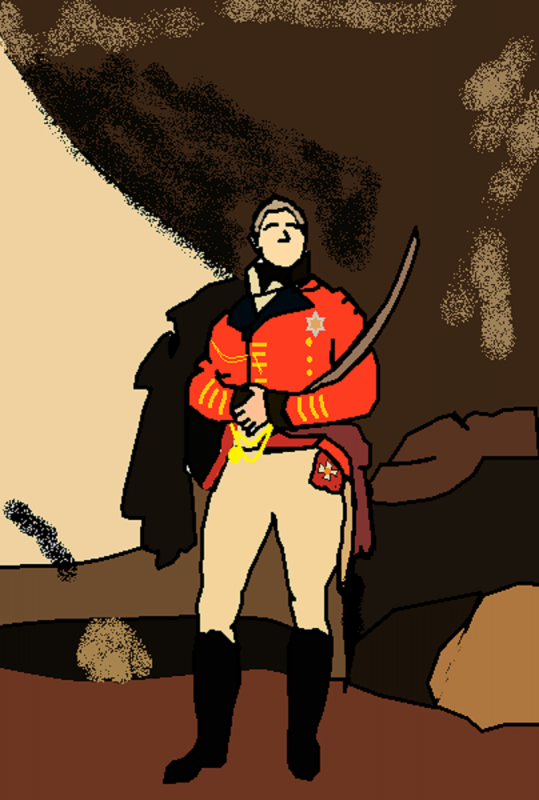 © Culture Perth and Kinross. Image credit: Culture Perth and Kinross
© Culture Perth and Kinross. Image credit: Culture Perth and Kinross
-
A Village in a Valley
A Village in a Valley c.1922John Duncan Fergusson was born in Edinburgh and died in Glasgow but spent significant parts of his life living and working in France. He was settled in Paris between 1907 and 1914 and mingled with avant-garde artists including Picasso and Matisse who influenced his work.
This view had not been identified and may be a French or a Scottish landscape. In 1922 Fergusson and an author friend John Ressich undertook a tour of the Scottish Highlands which resulted in a number of paintings of which this may be one. The handling of paint is similar to that of Paul Cezanne, a hero of Fergusson.
John Duncan Fergusson (1874–1961)
Oil on canvas
H 43.2 x W 50.8 cm
Perth & Kinross Council
-
This #DougieDraws was a request, from our friends in Edinburgh, the National Museums Scotland Partnerships team. But did you know that A Village in a Valley by Fergusson was purchased with a grant from the National Fund for Acquisitions?
A Village in a Valley
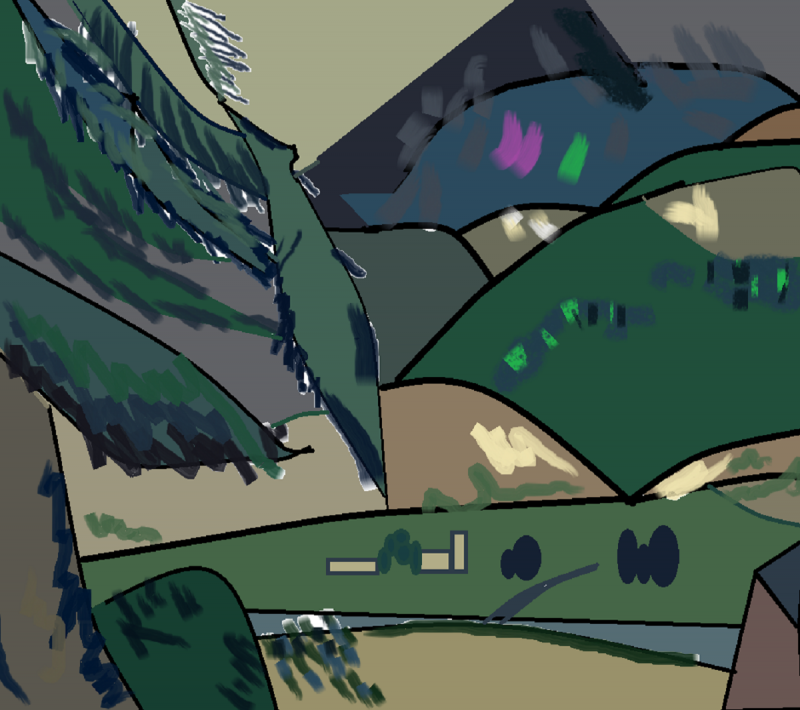 © Culture Perth and Kinross. Image credit: Culture Perth and Kinross
© Culture Perth and Kinross. Image credit: Culture Perth and Kinross
-
Summer, 1914
Summer, 1914 (Margaret Morris, 1891–1980) 1934As the date and title of this painting show, Fergusson often worked from sketches or memories that he had stored away for many years. Here, after a twenty-year interval, he returned to the first idyllic summer that he and Morris spent together in the south of France in 1914, shortly after they first met.
Morris provided a written parallel to this nostalgic image, recalling, 'the wonder of the summer at the Cap d'Antibes passes all description, Fergus had everything organised...I remember standing on the tiny balcony and saying to myself - nothing can ever be as perfect as this'.
John Duncan Fergusson (1874–1961)
Oil on canvas
H 88 x W 113.5 cm
Perth & Kinross Council
-
Another request from a fan. As you can see, as time goes on #DougieDraws just gets better and better!
Summer, 1914 by #DougieDraws
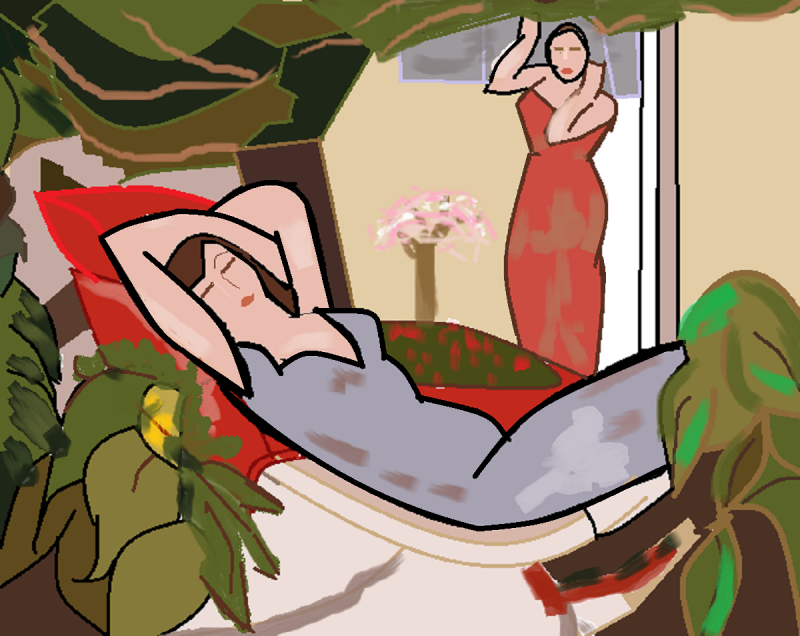 © Culture Perth and Kinross. Image credit: Culture Perth and Kinross
© Culture Perth and Kinross. Image credit: Culture Perth and Kinross
-
Waking
Waking 1865–1867The picture is one of a pair, the other is titled Asleep. The title of this one may suggest a wider wakening as the girl grows up, hence the discarded books and toys of childhood, above all, the open doored, empty birdcage above her head at which she gazes. The picture is highly detailed in its technique.
John Everett Millais (1829–1896)
Oil on canvas
H 90.8 x W 70.5 cm
Perth & Kinross Council
-
Our artiste #DougieDraws tackled Millais' Waking, and it ended up being more "have you seen my mummy?" than little girl waking up... Too spooky for us!
Waking by #DougieDraws
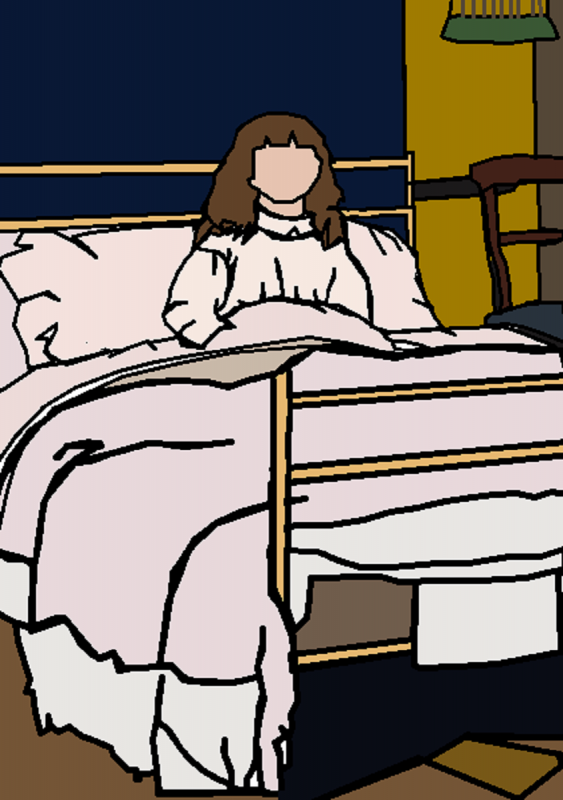 © Culture Perth and Kinross. Image credit: Culture Perth and Kinross
© Culture Perth and Kinross. Image credit: Culture Perth and Kinross
-
Effie Millais
Effie Millais, née Gray (1828–1897) 1873The Cornhill Magazine was founded 160 years ago and in a Portrait of Effie Millais, the artist originally painted his youngest son, John Guille Millais, seated on his mother's lap, but this figure was scraped out and the sitter, his wife, now holds a copy of the Cornhill Magazine. Effie is shown pointing to a harvest scene of a thresher on the cover of the magazine. This was an in-joke between the couple as Effie was known to have pushed her husband to take on more and more work.
John Everett Millais (1829–1896)
Oil on canvas
H 99.6 x W 84.1 cm
Perth & Kinross Council
-
This #DougieDraws version of Effie Millais, much like Waking, has no facial expression. It seems that #DougieDraws doesn't really want to draw faces
Effie Millais by #DougieDraws
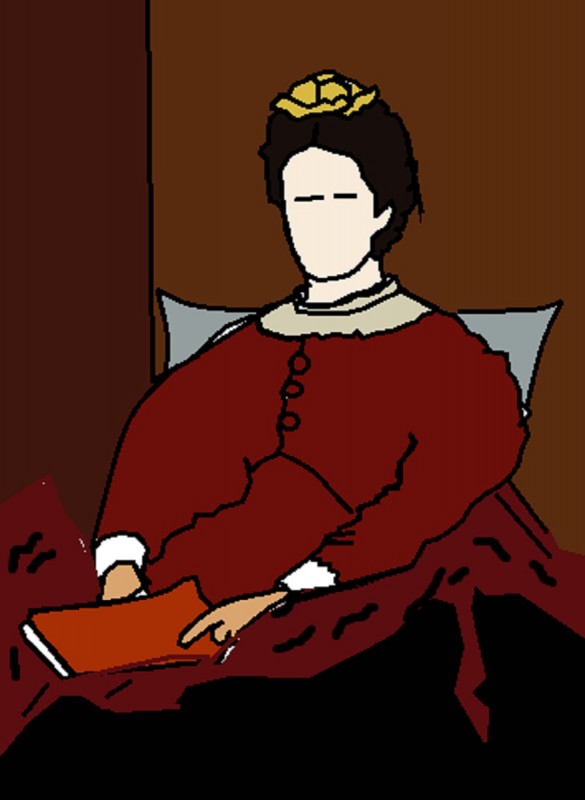 © Culture Perth and Kinross. Image credit: Culture Perth and Kinross
© Culture Perth and Kinross. Image credit: Culture Perth and Kinross
